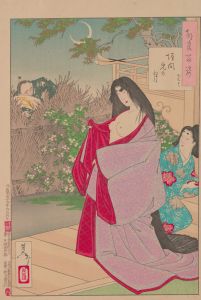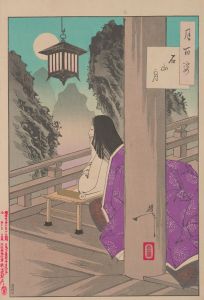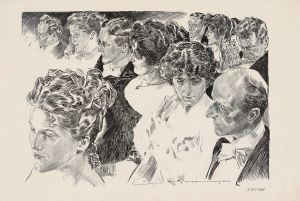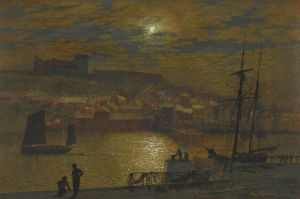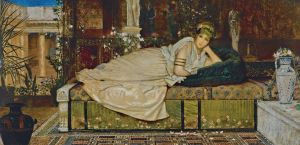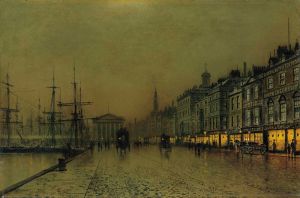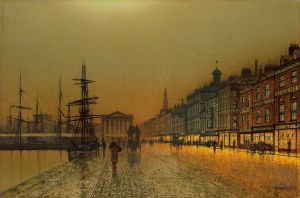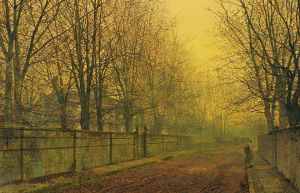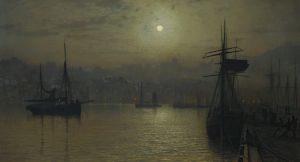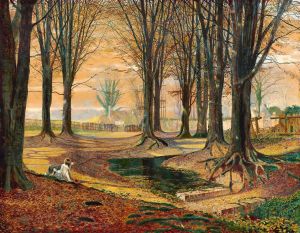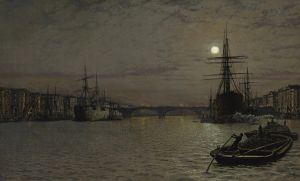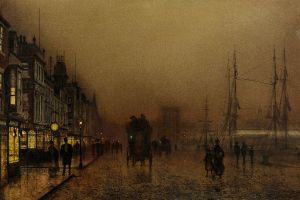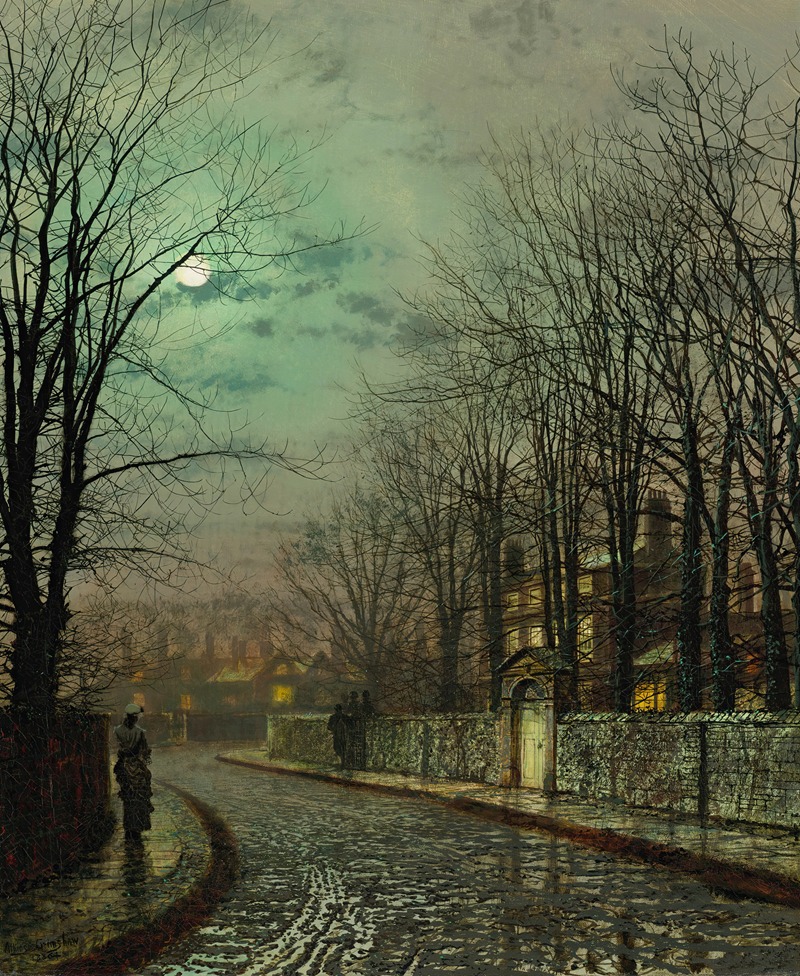
The Tryst
A hand-painted replica of John Atkinson Grimshaw’s masterpiece The Tryst, meticulously crafted by professional artists to capture the true essence of the original. Each piece is created with museum-quality canvas and rare mineral pigments, carefully painted by experienced artists with delicate brushstrokes and rich, layered colors to perfectly recreate the texture of the original artwork. Unlike machine-printed reproductions, this hand-painted version brings the painting to life, infused with the artist’s emotions and skill in every stroke. Whether for personal collection or home decoration, it instantly elevates the artistic atmosphere of any space.
"The Tryst" is a painting by the renowned British artist John Atkinson Grimshaw, who is celebrated for his evocative and atmospheric depictions of Victorian-era urban and rural scenes. Grimshaw, born on September 6, 1836, in Leeds, England, developed a distinctive style characterized by his masterful use of light and shadow, which he employed to create mood and depth in his works.
"The Tryst," painted in 1878, is a prime example of Grimshaw's ability to capture the subtle interplay of light and darkness. This painting depicts a serene, moonlit scene, a common theme in Grimshaw's oeuvre. The setting is a quiet, tree-lined lane, illuminated by the soft glow of the moon. The meticulous attention to detail in the foliage and the play of light on the path and trees demonstrate Grimshaw's skill in rendering natural elements with a high degree of realism.
In the foreground, a solitary figure, presumably a woman, stands waiting, her form partially obscured by the shadows. The title "The Tryst" suggests a secret meeting or rendezvous, adding an element of narrative intrigue to the scene. The woman's presence, combined with the tranquil yet somewhat mysterious atmosphere, invites viewers to ponder the story behind the painting.
Grimshaw's technique involved the use of thin glazes of paint, which he layered to achieve a luminous quality. This method allowed him to create the ethereal light effects that are a hallmark of his work. His ability to capture the quiet beauty of nocturnal scenes earned him considerable acclaim during his lifetime and continues to be celebrated by art enthusiasts and historians.
"The Tryst" is part of Grimshaw's broader body of work that often features similar themes and settings. His paintings frequently depict urban streets, suburban lanes, and rural landscapes under the soft light of dusk or dawn. These works are noted for their atmospheric quality and the sense of stillness they convey.
John Atkinson Grimshaw's contribution to the art world extends beyond his technical prowess; his paintings offer a window into the Victorian era's aesthetic sensibilities and the period's fascination with the interplay of light and shadow. "The Tryst" exemplifies his ability to evoke emotion and narrative through his meticulous and atmospheric approach to painting.
Grimshaw's work fell out of favor for a time after his death on October 13, 1893, but has since experienced a resurgence in appreciation. Today, his paintings are held in high regard and are featured in numerous public and private collections, including the Leeds Art Gallery and the Tate Gallery in London.
In summary, "The Tryst" by John Atkinson Grimshaw is a quintessential example of the artist's skill in capturing the quiet, contemplative moments of the Victorian landscape. Through his masterful use of light and shadow, Grimshaw creates a scene that is both visually captivating and rich with implied narrative, solidifying his place as a significant figure in the history of British art.





